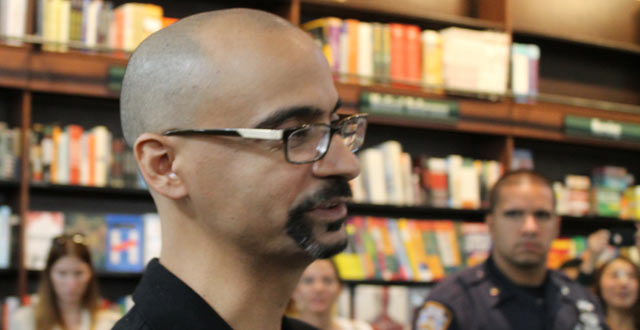Award-winning author Junot Díaz published an essay in the New Yorker last week that took aim at the general whiteness of most MFA writing programs. "From what I saw the plurality of students and faculty had been educated exclusively in the tradition of writers like William Gaddis, Francine Prose, or Alice Munro–and not at all in the traditions of Toni Morrison, Cherrie Moraga, Maxine Hong-Kingston, Arundhati Roy, Edwidge Danticat, Alice Walker, or Jamaica Kincaid," he wrote about his time as an MFA student at Cornell in the ’90s.
And based on his experiences as a teacher and speaker, not much has changed in the past two decades. Prachi Gupta was able to track down the syllabus for one of his classes at MIT, where he currently teaches. Take a look:
World-Building:
Description: "This class concerns the design and analysis of imaginary (or constructed) worlds for narrative media such as roleplaying games, films, comics, videogames and literary texts. … The class’ primary goal is to help participants create better imaginary worlds – ultimately all our efforts should serve that higher purpose."
Prerequisites: "You will need to have seen Star Wars (episode four: A New Hope) and read The Lord of the Rings by JRR Tolkien."
Reading List:
"A Princess of Mars" by ER Burroughs
"Dracula" by Bram Stoker
"Batman: The Dark Knight Returns" by Frank Miller
"Sunshine" by Robin McKinley
"V for Vendetta" by Alan Moore
"The Hunger Games" by Suzanne Collins
"The Hundred Thousand Kingdoms" by NK Jemisin
"Lilith’s Brood" by Octavia Butler
"Perdido Street Station" by China Miéville
"Snow Crash" by Neal Stephenson (Recommended)Some things to consider always when taking on a new world: What are its primary features–spatial, cultural, biological, fantastic, cosmological? What is the world’s ethos (the guiding beliefs or ideals that characterize the world)? What are the precise strategies that are used by its creator to convey the world to us and us to the world? How are our characters connected to the world? And how are we the viewer or reader or player connected to the world?
Advanced Fiction
Description: "An advanced workshop on the writing and critiquing of prose."
Reading List:
"Clara" by Roberto Bolaño
"Hitting Budapest" by NoViolet Bulawayo
"Whites" by Julie Otsuka
"Ghosts" by Edwidge Danticat
"My Good Man" by Eric Gansworth
"Gold Boy, Emerald Girl" by Yiyun Li
"Bounty" by George Saunders
When reached by phone, Díaz told Salon: "If race or gender (or any other important social force) are not part of your interpretive logic–if they’re not part of what you consider the real–then you’re leaving out most of what has made our world our world. This is a long way of saying that it’s not the books you teach, but how you teach them."
